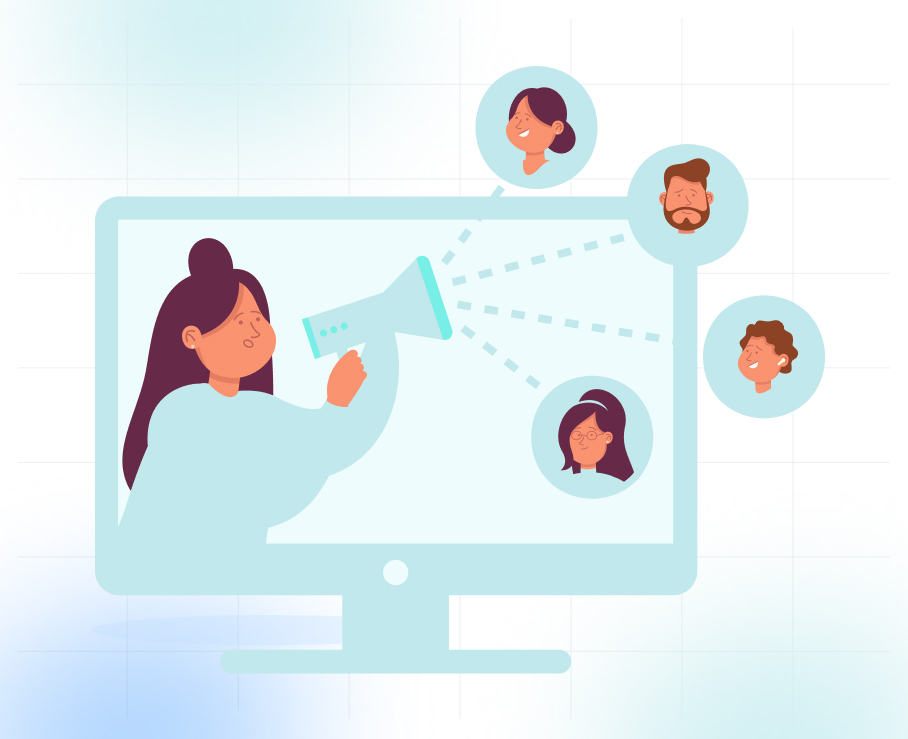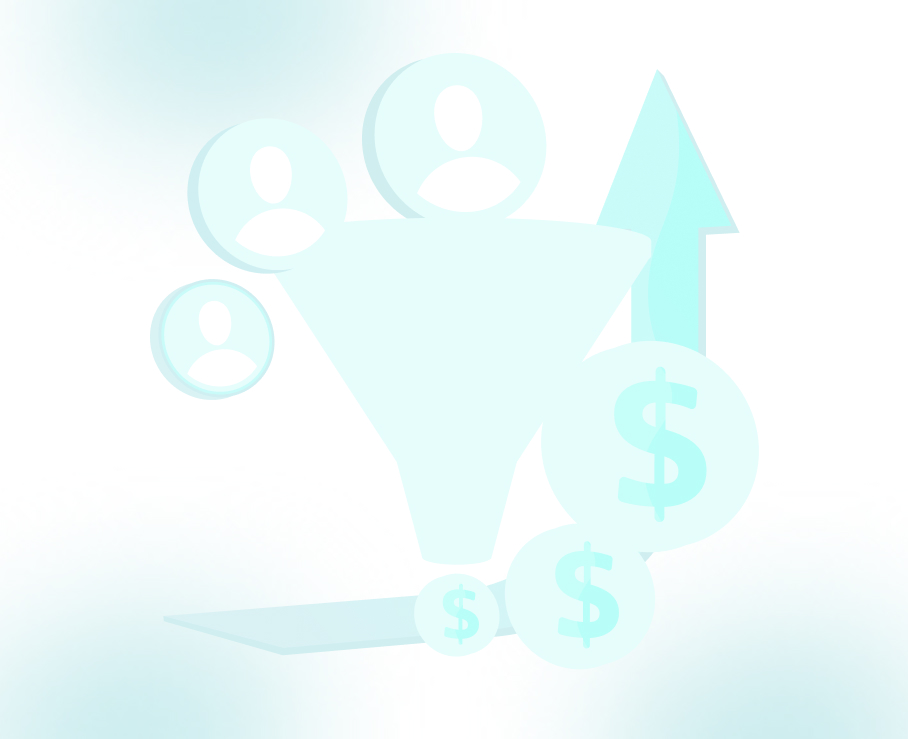
Top 5 Demand Generation Strategies for Tech Companies

As a tech company, you understand how challenging it is to stand out in the competitive B2B space. To get noticed and drive real growth, demand generation has become the go-to strategy for many businesses. Today, B2B organizations are investing 31% of their budgets into demand generation, recognizing it as a key driver of growth. But what exactly is demand generation, and how can it help your business thrive?
Simply put, demand generation is not just about getting your name out there; it's a full-funnel strategy that focuses on engaging the right audience at the right time, which eventually turns into qualified leads and loyal customers.
In this blog, we’ll look at how demand generation works, its process, and the strategies you can implement to attract and convert high-quality prospects, ensuring long-term success for your tech company.
TL;DR
- 31% of B2B budgets focus on demand gen; it's where growth happens.
- Use lifecycle-driven emails: match content to where prospects are in their journey, no generic blasts.
- Personalize based on real buyer signals like product page visits or event participation.
- Expert-led campaigns build trust, skip the sales pitch and lead with insights.
- Re-engage stalled leads with timely updates or fresh case studies.
- Aim for meetings, not demos. Meaningful conversations push deals forward.
- Measure success with conversion rates, CAC, and ROI to keep campaigns sharp.
What is B2B Demand Generation?
So, what exactly is B2B demand generation? It’s about creating awareness for your brand and educating your target audience on why they need your product or service. It's more than just pushing a sales pitch; it's about building brand recognition, establishing trust, and nurturing relationships over time.
In the tech industry, where solutions are often complex and not immediately understood, demand generation is even more critical. The goal isn’t to generate immediate sales but to generate interest that will eventually lead to a customer’s buying decision.
Demand Generation vs. Lead Generation
It’s easy to get confused between demand generation and lead generation, but here’s the key difference: Demand generation casts a wide net to attract potential buyers, while lead generation zeroes in on prospects who have already shown interest in your offering.
For example, demand generation might involve creating valuable content (like blog posts, eBooks, or webinars) to attract new people to your brand. Lead generation, on the other hand, focuses on converting that interest into specific actions, like submitting a form or scheduling a meeting.
As a tech company, you need both strategies. Demand generation builds your foundation, while lead generation nurtures prospects closer to a purchase.
Also Read: Understanding B2B Sales: Definitions, Examples, and Proven Strategies for Revenue Growth
The Demand Generation Process for Tech Companies
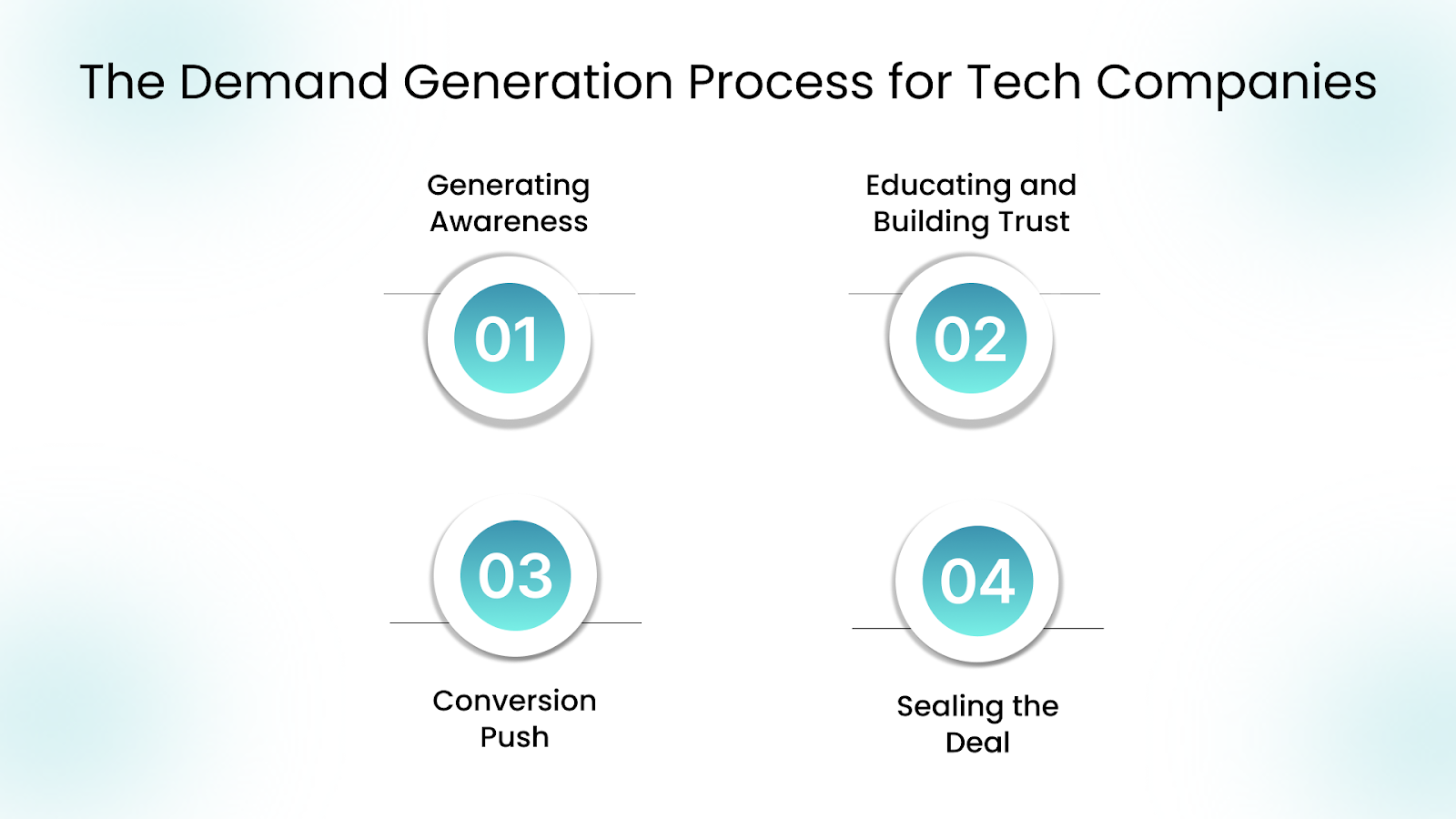
The demand generation process isn’t a one-time effort. It’s a journey that guides your prospects from awareness to purchase. Here’s a closer look at how to make it work for your tech business:
Stage 1: Generating Awareness
Top-of-funnel email marketing isn’t about pitching. It’s about presence. At this stage, the goal is to introduce your brand’s perspective, not your product. Cold emails should offer something useful: a fresh insight, a pattern you’re seeing, or a shift your audience should know about. If your email helps someone think differently about a problem they face, it’s done its job.
You’re not asking for a call, you’re building familiarity. Each email adds a layer of trust, positioning you as someone worth listening to. That impression only deepens when your emails echo what they’re seeing elsewhere, whether it’s a post on LinkedIn, a byline on a blog, or a stat they’ve come across in your whitepaper. When the timing is right, that quiet consistency is what gets them to reply.
Stage 2: Educating and Building Trust
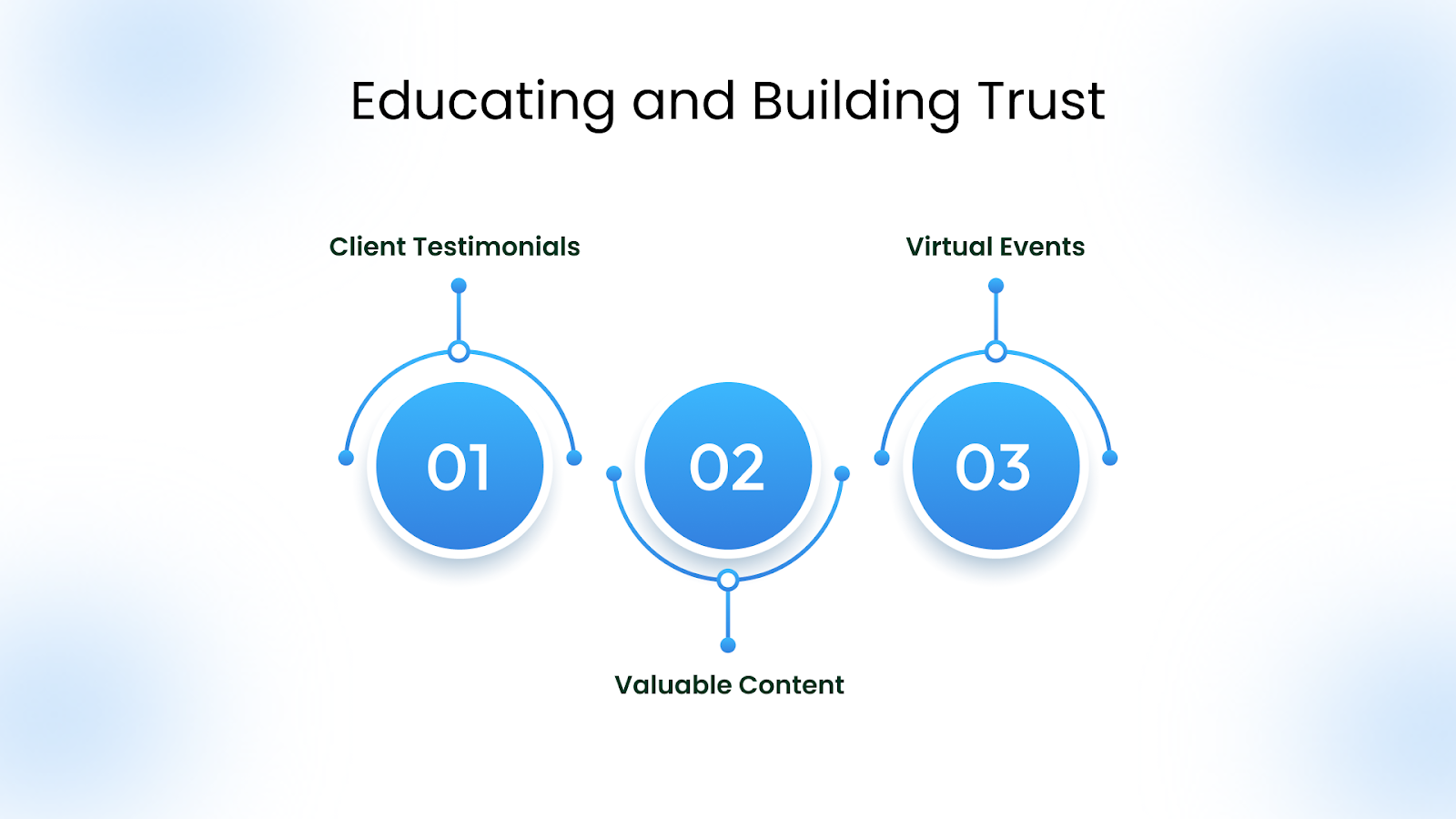
Once you've captured attention, it's time to educate your prospects. At this stage, your audience knows who you are, but they’re still deciding if your solution is right for them. This is where trust-building comes into play.
You can do this by offering:
- Client Testimonials and Case Studies: Show how your tech product has helped similar companies or solve specific pain points.
- Valuable Content: How-to guides and in-depth research reports are perfect for educating prospects about your offering and its benefits.
- Virtual Events and Q&A Sessions: These interactive events allow you to showcase your expertise and directly engage with prospects, addressing their concerns in real-time.
By proving that you understand their challenges and can deliver the right solution, you build credibility and make prospects more likely to consider your product.
Stage 3: Conversion Push
Now that you’ve built awareness and trust, it’s time to convert prospects into leads. This is the “middle of the funnel” (MOFU) stage, where prospects are evaluating whether your solution is the right fit.
Here’s how you can move them closer to a decision:
- Personalized Outreach: Send tailored emails or set up one-on-one consultations to address specific needs and concerns. Personalization is key in making prospects feel valued and understood.
- Product Walkthroughs: Instead of sending people off to explore on their own, invite them to book a short call where you walk them through exactly how your product fits their use case. For high-consideration B2B tools, a guided, human-led demo builds clarity and trust faster than a self-serve trial ever could.
- Address Concerns: At this stage, prospects may have questions about pricing, integration, or implementation. Be proactive in addressing these concerns to clear any roadblocks to conversion.
Stage 4: Sealing the Deal
Once prospects are convinced, it’s time to seal the deal and turn them into customers. However, this stage doesn’t end with a signature. Maintaining a positive relationship post-sale ensures customer satisfaction and encourages referrals.
- Collaboration Between Marketing and Sales: Marketing can help sales by continuing to support the prospect during the final stages. Provide marketing collateral and customer success stories that can ease any final doubts.
- Exceptional Customer Service: Providing excellent support during the onboarding process, and gathering customer feedback through surveys shows that you care about the customer’s experience beyond just the sale.
Also Read: Proven Lead Generation Strategies for Marketing Agencies
5 Key Demand Generation Strategies for Tech Companies
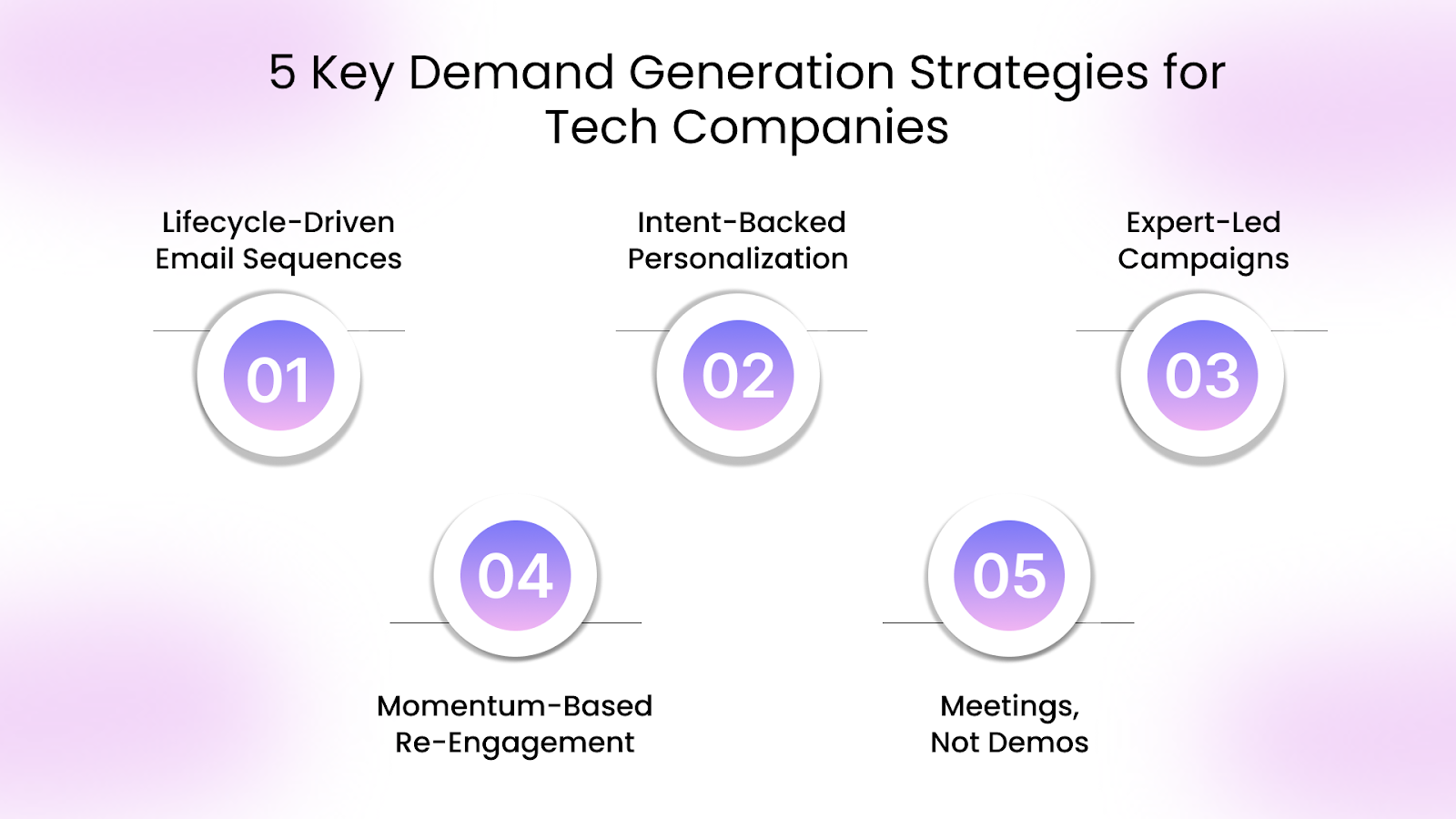
When it comes to driving real demand in B2B tech, email marketing isn’t just one part of the strategy; it’s the engine. If done right, it lets you reach high-intent prospects, nurture them with precision, and turn interest into pipeline.
1. Lifecycle-Driven Email Sequences
Effective demand generation starts with understanding where your prospect is in their buying journey, and matching your email to that moment. Awareness emails don’t pitch; they prompt. They might highlight a shift in your industry, unpack a pain point that’s emerging, or offer a contrarian POV that earns attention.
As prospects engage and move further, shift the messaging. Mid-funnel emails can share targeted insights (backed by use cases or relevant benchmarks), while bottom-funnel communication should help de-risk the decision. Tailored emails, mapped to lifecycle signals like page visits, webinar signups, or past replies, can move leads faster than any generic nurture flow.
2. Intent-Backed Personalization
The days of broad segmentation are over. Leading tech companies now personalize emails based on real buying signals, like product page visits, event attendance, or replies to earlier sequences.
Tools that surface behavioral intent let you craft highly contextual emails. For instance, if someone has been looking at your “automation” use cases, you don’t just follow up, you speak to the specific efficiency wins your product delivers, and back it with results.
This style of outreach doesn’t feel like marketing; it feels like relevance. And that’s what drives reply rates.
3. Expert-Led Campaigns That Spark Dialogue
In early-stage outreach, trust is your biggest hurdle. Instead of feature dumps or gated PDFs, lead with subject-matter expertise. Short, plain-text emails from your founder, product lead, or customer success head, with a link to a candid blog or POV on a recent shift, outperform polished campaigns.
These emails aren’t pushing products. They’re signaling authority. And when paired with thoughtful CTAs like “Want to unpack this over a quick call?” they create low-friction ways into deeper conversations.
Content marketing can support this, but only when it feels real. Sharp opinion pieces, customer-backed observations, or teardown-style explainers all work well when they lead to an ask that’s clear and credible.
4. Momentum-Based Re-Engagement
Not every lead converts right away. Email gives you the flexibility to re-engage at the right time, without starting from scratch. If a deal stalls or a lead goes quiet, you don’t nudge with a generic “just following up.” You come back with something new: a timely case study, a recent product update, or even a fresh take on the challenge they mentioned earlier.
The trick is to anchor re-engagement in momentum. Maybe they downloaded something months ago, or maybe you’ve just worked with a company in their space. Whatever the angle, re-entry should feel thoughtful, not automated.
Even simple “saw this and thought of you” messages, when grounded in context, bring old leads back to life.
5. Meetings, Not Demos
The goal of your campaigns isn’t just to push a trial, it’s to spark a conversation. High-performing emails don’t drop links; they drive scheduled appointments.
These meetings allow your team to control the narrative, uncover real buying triggers, and shape how the problem is understood. A well-framed calendar link (“happy to walk you through what others in your space are doing”) beats any CTA that says “start your trial now.”
The difference? One builds trust. The other shifts work to the prospect.
For companies looking to drive meaningful conversations and long-term pipelines, this approach isn’t optional; it’s foundational. At TLM, we work closely with you to map outreach to your market realities, using tested demand generation strategies that compound over time. It’s not about short bursts of activity; it’s about building a motion that scales.
Also Read: Definitive Guide to B2B Lead Generation Strategies
Optimizing Demand Generation with Technology
Technology can strengthen demand generation efforts, but only when it supports more relevant, personalized outreach. The goal isn’t just to automate processes but to make sure the right prospects are hearing from you in ways that feel timely and specific to their context.
AI makes this more achievable. It can help detect intent signals, like repeat visits to particular pages, and respond with tailored email sequences or nudges that align with what that prospect is exploring.
Chatbots, too, can do more than just greet visitors. When set up with logic rooted in user behavior, they can point someone to the right case study, offer a quick resource, or suggest a meeting, all based on real interest, not guesswork.
Used thoughtfully, these tools help turn anonymous visitors into warm leads, not through volume, but by delivering relevance at the right moment.
Also Read: How to master email marketing for b2b lead generation
Monitoring and Measuring Demand Generation Success
A critical element in refining your demand generation strategy is monitoring and measuring its success. Without clear metrics, it’s difficult to know what’s working and where changes are needed. By tracking the right Key Performance Indicators (KPIs), you can fine-tune your campaigns and make smarter decisions that move your pipeline forward.
Key Performance Indicators (KPIs) to Track
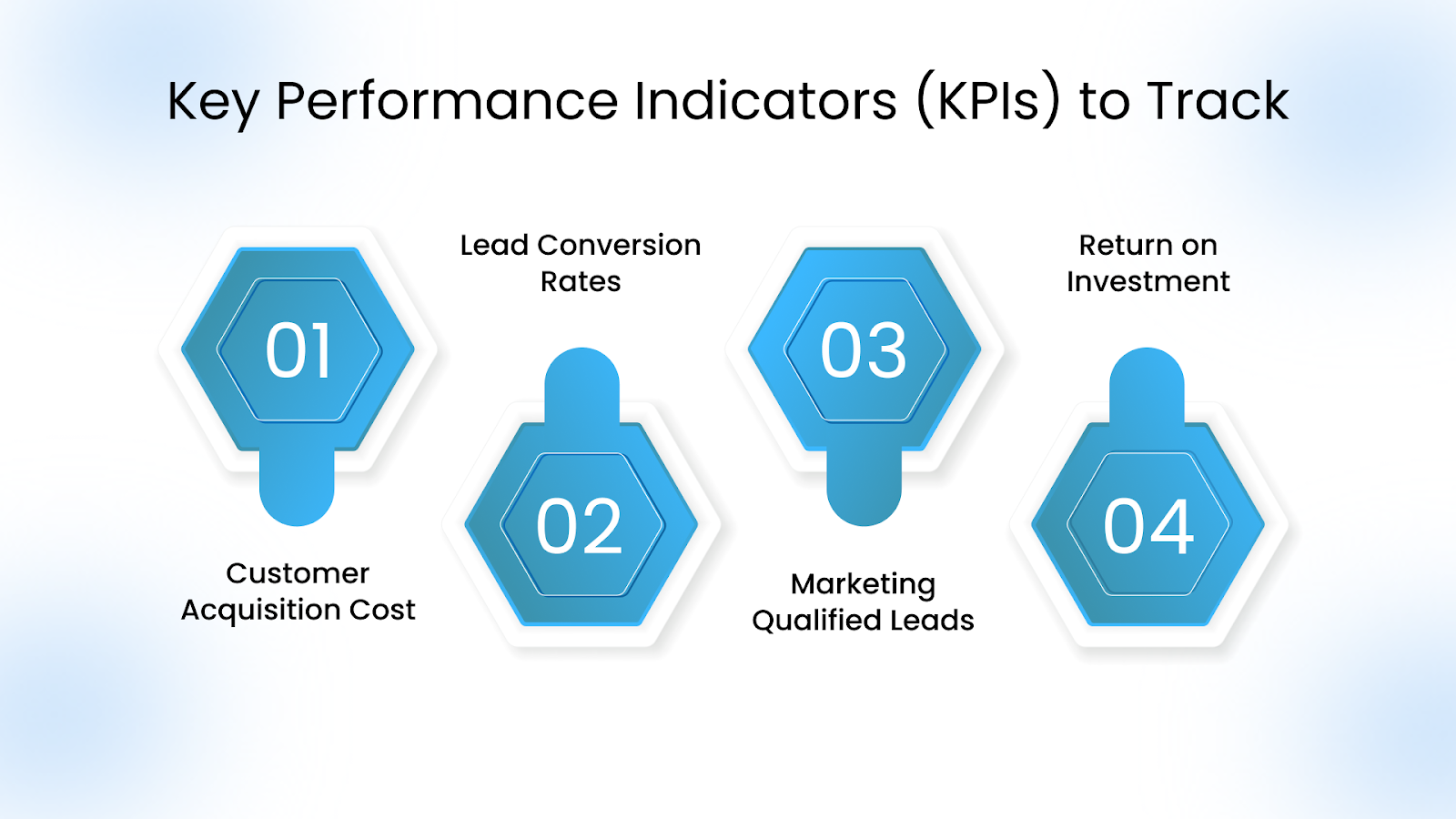
To effectively measure the success of your demand generation campaigns, it’s essential to track the right metrics. Here are the KPIs you should focus on:
- Customer Acquisition Cost (CAC): This metric tells you how much it costs to acquire a new customer. By comparing CAC with lifetime value (LTV), you can determine if your demand generation efforts are efficient and cost-effective.
- Lead Conversion Rates: Tracking how many leads convert to customers at various stages of the funnel helps you gauge the effectiveness of your nurture campaigns. Low conversion rates might indicate that your content or outreach isn’t addressing prospects' pain points.
- Marketing Qualified Leads (MQLs) and Sales Qualified Leads (SQLs): These metrics track leads at different stages of qualification. MQLs are leads who have engaged with your content, while SQLs are leads who are more likely to make a purchase. Tracking both can help you understand the flow from initial interest to sale.
- Return on Investment (ROI): Ultimately, every marketing campaign needs to deliver measurable value. Beyond just lead volume, evaluating ROI alongside metrics like Monthly Recurring Revenue (MRR) helps you understand the true financial impact of your demand generation efforts. This gives a clearer picture of whether the strategy is attracting not just leads, but the kind of leads that contribute to long-term growth.
By tracking these KPIs, you can ensure that your campaigns are aligned with business goals and make data-driven decisions to optimize your efforts.
Melbourne Media Company Boosts Sales with TLM's B2B Lead Generation
Melbourne Media Company, specializing in sports widgets for the broadcast and online media industries, faced challenges with outdated prospect lists and high bounce rates. With TLM’s expertise, we crafted a targeted email campaign focusing on personalized, rich-text content that highlighted their expertise in the sports media space. By using infographics and widget designs, we made the emails more engaging and visually appealing, allowing prospects to understand the value of the products better.
Within months, lead conversion rates doubled, with the company generating 5-6 qualified leads per month. Our continuous effort to clean and optimize purchased data further improved engagement, lowering bounce rates and driving more direct website traffic.
Optimizing your demand generation efforts with technology is no longer a luxury; it’s a necessity. At TLM, we specialize in targeted lead generation, using advanced segmentation to reach the right prospects. Our personalized email campaigns boost engagement by speaking directly to each prospect’s needs. We streamline the appointment scheduling process, allowing your sales team to focus on closing deals.
With ABM strategies, we tailor outreach for high-value accounts, while our data-driven optimization ensures continuous improvement for better results. Let us transform your email marketing into a powerful tool for B2B lead generation and business growth.
FAQs
1. What are the two main go-to-market strategies for high-tech companies?
High-tech companies primarily use inbound marketing and outbound marketing as their go-to-market strategies.
2. What is ICP in marketing?
ICP stands for Ideal Customer Profile, which is a detailed description of the type of company most likely to benefit from your product or service and become a profitable, loyal customer.
3. What are the 4 P's of KPI?
The 4 P's of KPI—Product, Price, Place, and Promotion- help businesses develop KPIs that align with their strategy, enabling effective tracking of success across these key areas.


